Results
-
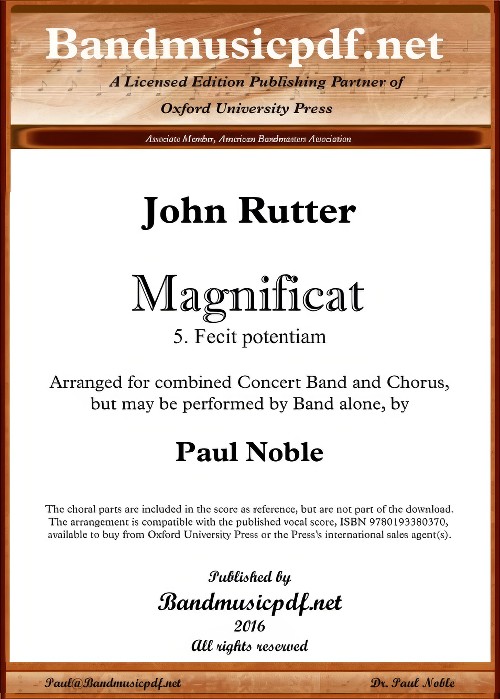 £75.00
£75.00Fecit Potentiam (from Magnificat) (Concert Band with Optional Choir - Score and Parts) - Rutter, John - Noble, Paul
Magnificat anima mea (My soul doth magnify The Lord) is the first of seven movements comprising John Rutter's setting of the biblical canticle Magnifica, completed in 1990. Rutter was inspired by jubilant celebrations of Mary in Hispanic cultures and conceived the work as a bright Latin-flavoured fiesta. In countries such as Spain, Mexico and Puerto Rico, feast days of the Virgin are joyous opportunities to take to the streets and celebrate with singing, dancing and processions. This arrangement for combined Concert Band and Chorus may also be performed by band alone, and is a faithful representation of the original composition.
Estimated dispatch 7-14 working days
-
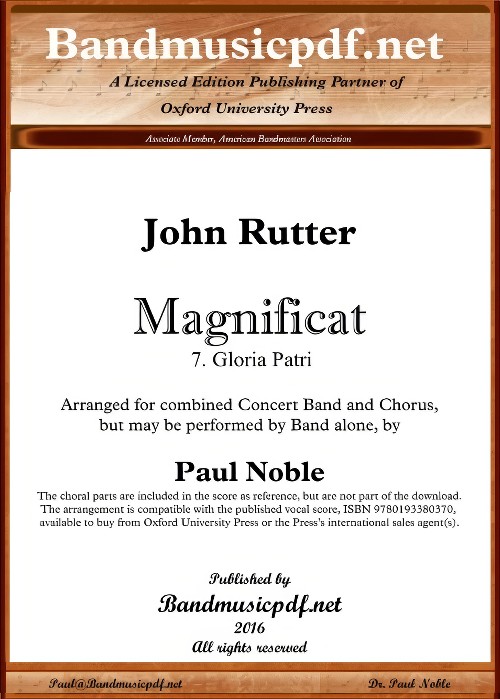 £110.00
£110.00Gloria Patri (from Magnificat) (Concert Band with Optional Choir - Score and Parts) - Rutter, John - Noble, Paul
Magnificat anima mea (My soul doth magnify The Lord) is the first of seven movements comprising John Rutter's setting of the biblical canticle Magnifica, completed in 1990. Rutter was inspired by jubilant celebrations of Mary in Hispanic cultures and conceived the work as a bright Latin-flavoured fiesta. In countries such as Spain, Mexico and Puerto Rico, feast days of the Virgin are joyous opportunities to take to the streets and celebrate with singing, dancing and processions. This arrangement for combined Concert Band and Chorus may also be performed by band alone, and is a faithful representation of the original composition.
Estimated dispatch 7-14 working days
-
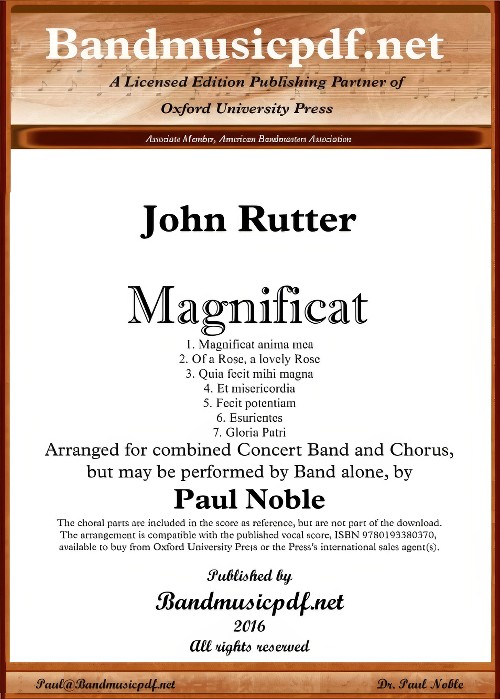 £595.00
£595.00Magnificat (Concert Band with Optional Choir - Score and Parts) - Rutter, John - Noble, Paul
Magnificat anima mea (My soul doth magnify The Lord) is the first of seven movements comprising John Rutter's setting of the biblical canticle Magnifica, completed in 1990. Rutter was inspired by jubilant celebrations of Mary in Hispanic cultures and conceived the work as a bright Latin-flavoured fiesta. In countries such as Spain, Mexico and Puerto Rico, feast days of the Virgin are joyous opportunities to take to the streets and celebrate with singing, dancing and processions. This arrangement for combined Concert Band and Chorus may also be performed by band alone, and is a faithful representation of the original composition.
Estimated dispatch 7-14 working days
-
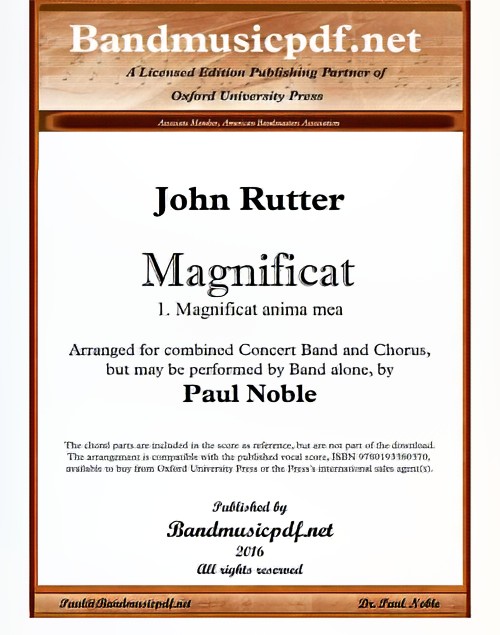 £200.00
£200.00Magnificat Anima Mea (from Magnificat) (Concert Band with Optional Choir - Score and Parts) - Rutter, John - Noble, Paul
Magnificat anima mea (My soul doth magnify The Lord) is the first of seven movements comprising John Rutter's setting of the biblical canticle Magnifica, completed in 1990. Rutter was inspired by jubilant celebrations of Mary in Hispanic cultures and conceived the work as a bright Latin-flavoured fiesta. In countries such as Spain, Mexico and Puerto Rico, feast days of the Virgin are joyous opportunities to take to the streets and celebrate with singing, dancing and processions. This arrangement for combined Concert Band and Chorus may also be performed by band alone, and is a faithful representation of the original composition.
Estimated dispatch 7-14 working days
-
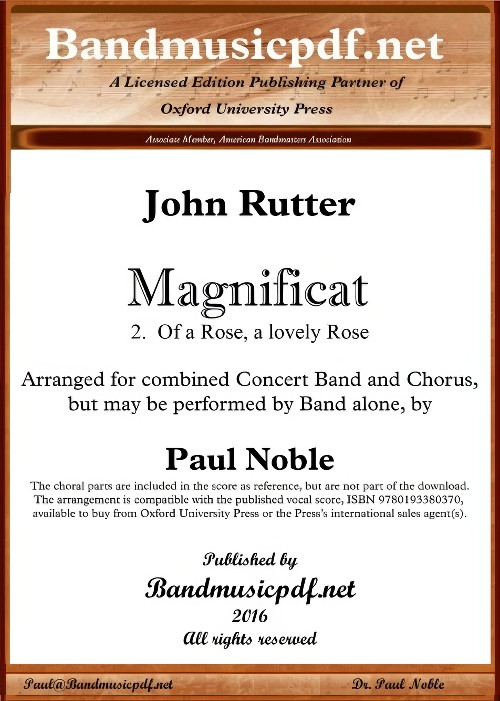 £75.00
£75.00Of a Rose, a Lovely Rose (from Magnificat) (Concert Band with Optional Choir - Score and Parts) - Rutter, John - Noble, Paul
Magnificat anima mea (My soul doth magnify The Lord) is the first of seven movements comprising John Rutter's setting of the biblical canticle Magnifica, completed in 1990. Rutter was inspired by jubilant celebrations of Mary in Hispanic cultures and conceived the work as a bright Latin-flavoured fiesta. In countries such as Spain, Mexico and Puerto Rico, feast days of the Virgin are joyous opportunities to take to the streets and celebrate with singing, dancing and processions. This arrangement for combined Concert Band and Chorus may also be performed by band alone, and is a faithful representation of the original composition.
Estimated dispatch 7-14 working days
-
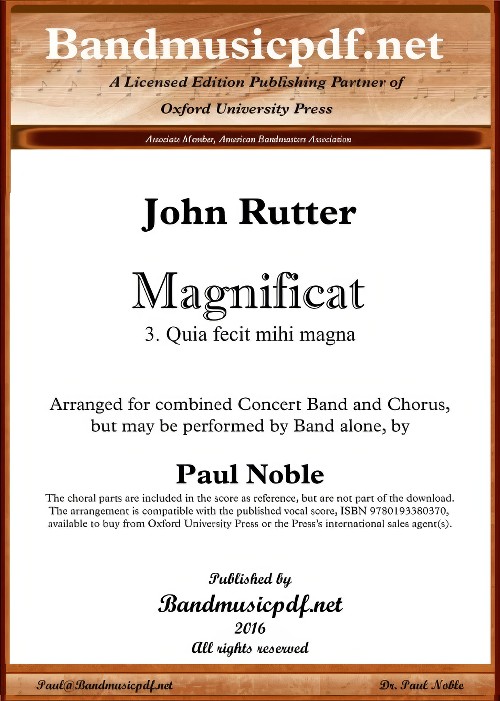 £75.00
£75.00Quia Fecit Mihi Magna (from Magnificat) (Concert Band with Optional Choir - Score and Parts) - Rutter, John - Noble, Paul
Magnificat anima mea (My soul doth magnify The Lord) is the first of seven movements comprising John Rutter's setting of the biblical canticle Magnifica, completed in 1990. Rutter was inspired by jubilant celebrations of Mary in Hispanic cultures and conceived the work as a bright Latin-flavoured fiesta. In countries such as Spain, Mexico and Puerto Rico, feast days of the Virgin are joyous opportunities to take to the streets and celebrate with singing, dancing and processions. This arrangement for combined Concert Band and Chorus may also be performed by band alone, and is a faithful representation of the original composition.
Estimated dispatch 7-14 working days
-
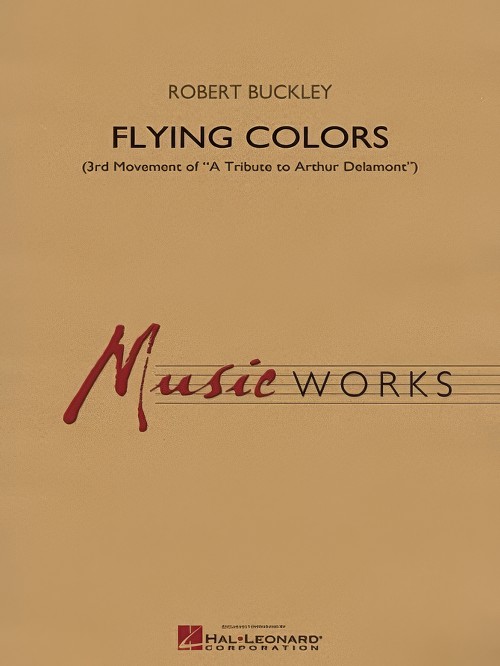 £72.99
£72.99Flying Colors (Concert Band - Score and Parts) - Buckley, Robert
Third Movement of A Tribute to Arthur Delamont.Imagine a band far off in the distance marching toward you - soft at first, the music becomes louder and louder; the red capes of the band sway in the wind, getting closer and closer. It was this image that inspired Flying Colors. Famed bandmaster Arthur Delamont always programmed a march in his concerts, and the hallmark of his band was their red capes. The work begins very softly with a distant snare drum beat. The trumpets enter quietly with the melody, and with each new melodic entry the music grows and intensifies to a roaring finish. This is a fresh new take on a march, and is sure to please players and audiences alike! Flying Colors is the third movement of A Tribute to Arthur Delamont and was commissioned by the West Vancouver Youth Band.Duration: 3:10
Estimated dispatch 7-14 working days
-
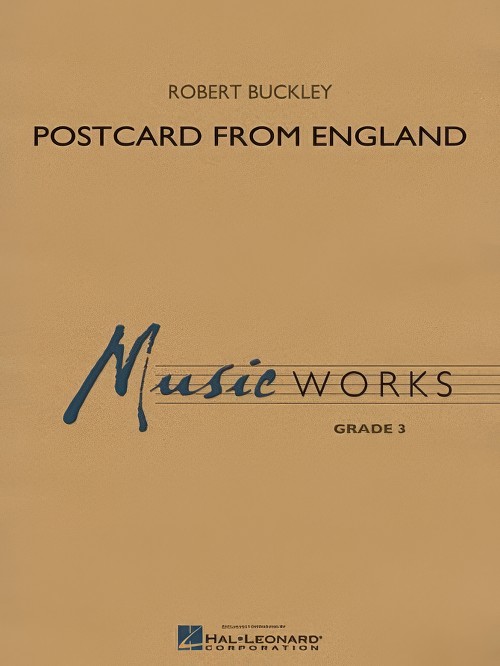 £60.99
£60.99Postcard from England (Concert Band - Score and Parts) - Buckley, Robert
Postcard from England depicts a trek across the English countryside, with its gently rolling hills, thatched cottages, stately homes, castles and cathedrals. From the catchy walking theme featuring the low brass, percussion and woodwinds to the elegant stately theme reminiscent of the British brass band sound, every section in the band is featured. Tuneful and descriptive, take your audience on a scenic tour of this historic and charming part of the world!Duration: 3:45
Estimated dispatch 7-14 working days
-
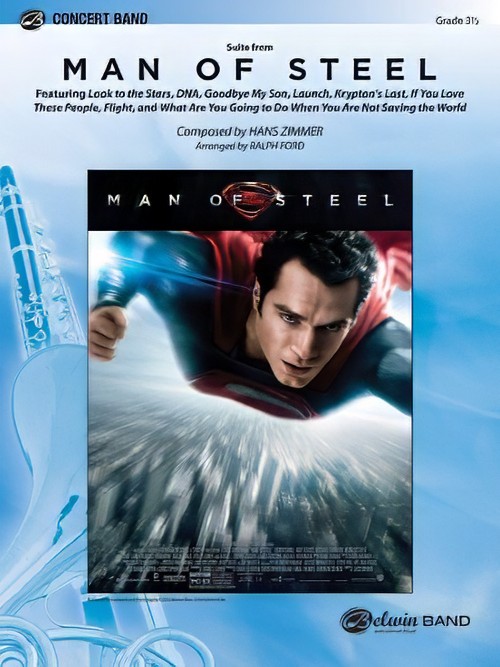 £84.50
£84.50Man of Steel, Suite from (Concert Band - Score and Parts) - Zimmer, Hans - Ford, Ralph
The mega-blockbuster, Man of Steel, has a musical score as powerful as the super hero himself. Composer Hans Zimmer captures the vastness, beauty, conflict, and emotion of the film in his powerful score including: "Look to the Stars," "DNA," "Goodbye My Son," "Launch," "Krypton's Last," "If You Love These People," "Flight," and "What Are You Going to Do When You Are Not Saving the World?" Supermen and superfans are sure to enjoy this super medley. Put on your cape and take off with the Man of Steel!Duration: 10:00
Estimated dispatch 7-14 working days
-
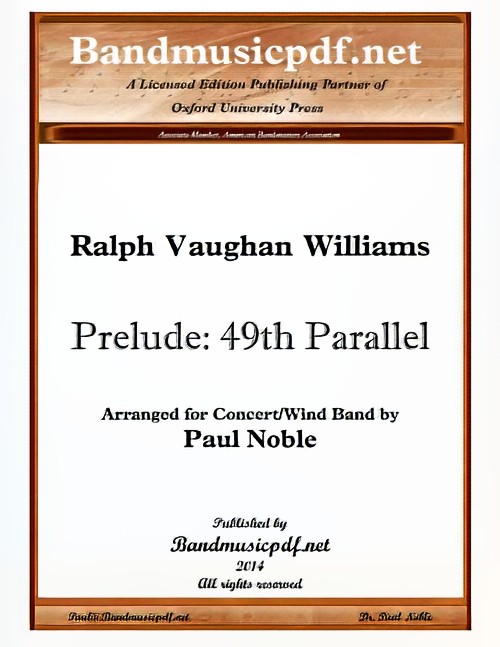 £90.00
£90.00Prelude: 49th Parallel (Concert Band - Score and Parts) - Williams, Vaughan - Noble, Paul
Composed in 1941 for the film 49th Parallel - The Invaders, the drama and depth of the music was intended to influence the United States, which was then neutral, to enter the war. The title relates to the border between the U.S. and Canada. The power, drama, and technical accessibility of this piece should be one that all bands would take great pride in performing.
Estimated dispatch 7-14 working days
